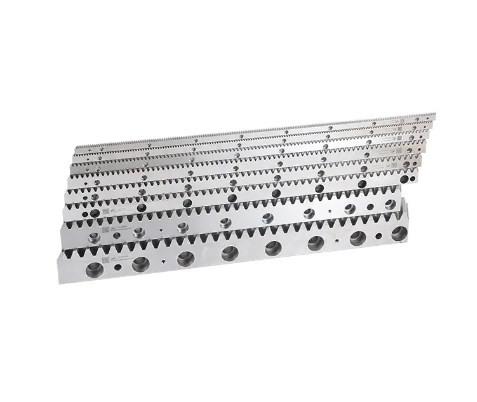In industrial automation and high-precision machinery, the choice between a Precision Gear Rack and a linear motor drive often comes down to performance demands, operational environment, and energy efficiency. While both systems aim to achieve accurate linear motion, the underlying mechanisms differ significantly, resulting in notable contrasts in power consumption and overall efficiency.
Mechanical Transmission Versus Direct Drive
A gear rack operates through mechanical engagement between a rotating pinion and the rack teeth, converting rotary motion into linear displacement. This method introduces mechanical contact, frictional losses, and the need for proper lubrication. By contrast, a linear motor drive eliminates most mechanical intermediaries by producing linear movement directly through electromagnetic forces. This direct-drive nature often enhances energy conversion efficiency since fewer moving parts dissipate energy as heat.
Energy Losses in High-Load Applications
When operating under heavy loads, a gear rack system must overcome resistance from tooth contact, rolling friction, and sometimes misalignment. These losses can accumulate and reduce overall efficiency, especially if maintenance or lubrication is inconsistent. Linear motors, while generally more efficient, also face energy losses in the form of heat generated by their coils, particularly during high-current operation. However, their lack of mechanical wear typically results in less energy wasted through friction over time.
Precision and Control Efficiency
Another dimension of energy efficiency lies in how each system handles precision and control. A gear rack often requires additional components such as gearboxes or encoders, which may add to energy consumption indirectly. Linear motors, with their direct feedback and fine control capabilities, can often achieve higher positional accuracy with less corrective energy expenditure. This efficiency in control loops makes them well-suited for applications demanding both speed and precision.
Maintenance and Long-Term Considerations
Energy efficiency is not only about direct consumption but also about long-term reliability and system upkeep. Gear racks require periodic lubrication and alignment checks, and inefficiencies can creep in as wear progresses. Linear motors, while highly efficient when maintained properly, can suffer from thermal management challenges and typically require more advanced cooling systems. Thus, the operational context often determines which solution offers superior efficiency over the product lifecycle.
The energy efficiency differences between a rack-based system and a linear motor stem from their fundamental design philosophies. The rack system, while robust and mechanically straightforward, introduces frictional losses that can reduce efficiency under heavy use. The linear motor, with its direct electromagnetic actuation, generally offers higher efficiency but comes with its own demands for thermal control. Choosing between the two requires a balanced view of application requirements, energy priorities, and long-term operational goals.
Precision Gear Rack
Technical requirement
Quality Grade: DIN 6
Material: S45C/ 42CrMo
Tooth type: straight tooth.
Production process: four sides grinding, tooth surface grinding, and V rail surface grinding.
Hardness treatment: high frequency quenching HRC48-52°/ carburizing quenching HRC55-60°
